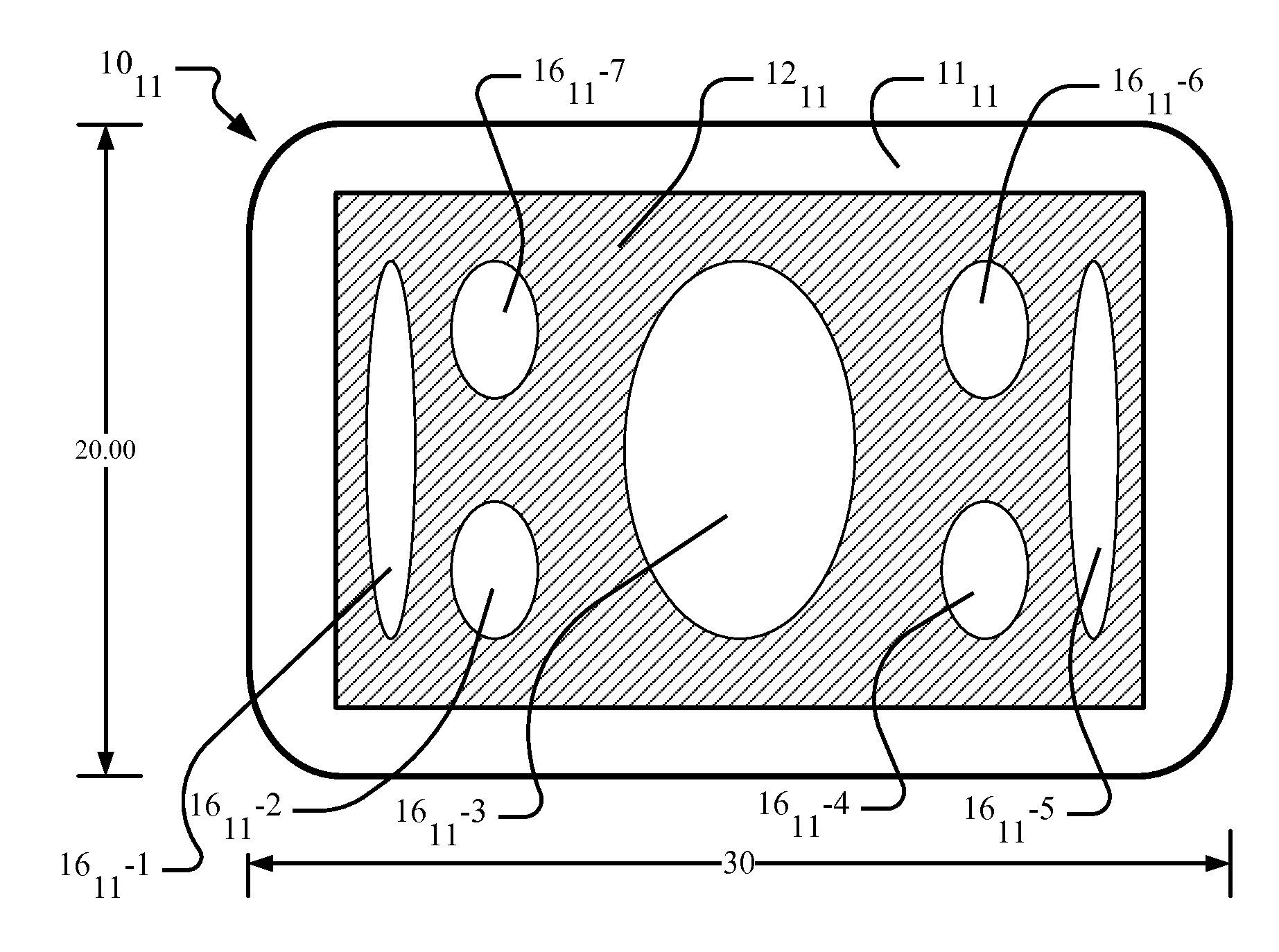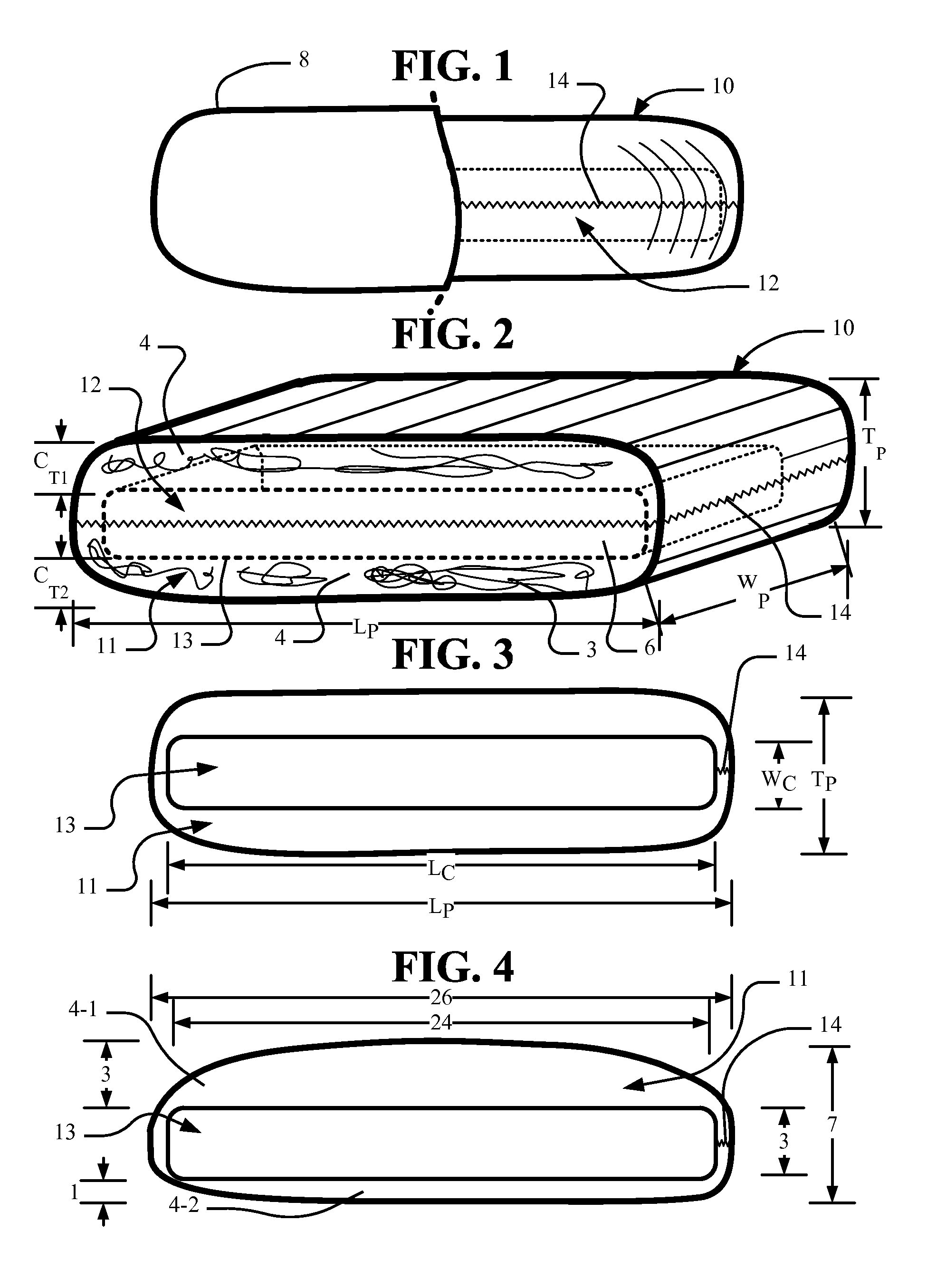Pillow having structurally varying core and cover
a pillow and core technology, applied in the field of pillows, can solve the problems of local stretching, deformation of the skin, and cessation of capillary blood flow, and the standard solid-body pillows used for many years
- Summary
- Abstract
- Description
- Claims
- Application Information
AI Technical Summary
Benefits of technology
Problems solved by technology
Method used
Image
Examples
Embodiment Construction
[0101]In FIG. 1, pillow10 externally has a normal shape and appearance and fits within a conventional pillow case 8. Internally, the pillow 10 has a structurally varying core 12. A zipper 14 or other fastening device is provided, in some embodiments, so as to provide an opening for access to the internal parts including core 12 of the pillow 10.
[0102]In FIG. 2, the pillow 10 of FIG. 1 is shown and includes the core 12 encased within a core opening 6 formed by the cover 11. The core 12 is made of structurally varying foam and includes varying displacement parameters. The cover 11 surrounds the core 12 and the zipper 14 provides an opening for internal access. Typically, zipper 14 extends along two of the four sides of the pillow 10.
[0103]In FIG. 1 and FIG. 2, the pillow 10 is for supporting and positioning a head and neck of a reclining body (see FIG. 34 through FIG. 47) on a mattress (see FIG. 34 through FIG. 37) where the pillow 10 has a pillow length, PT, a pillow width, PW, and a...
PUM
 Login to View More
Login to View More Abstract
Description
Claims
Application Information
 Login to View More
Login to View More - R&D
- Intellectual Property
- Life Sciences
- Materials
- Tech Scout
- Unparalleled Data Quality
- Higher Quality Content
- 60% Fewer Hallucinations
Browse by: Latest US Patents, China's latest patents, Technical Efficacy Thesaurus, Application Domain, Technology Topic, Popular Technical Reports.
© 2025 PatSnap. All rights reserved.Legal|Privacy policy|Modern Slavery Act Transparency Statement|Sitemap|About US| Contact US: help@patsnap.com



